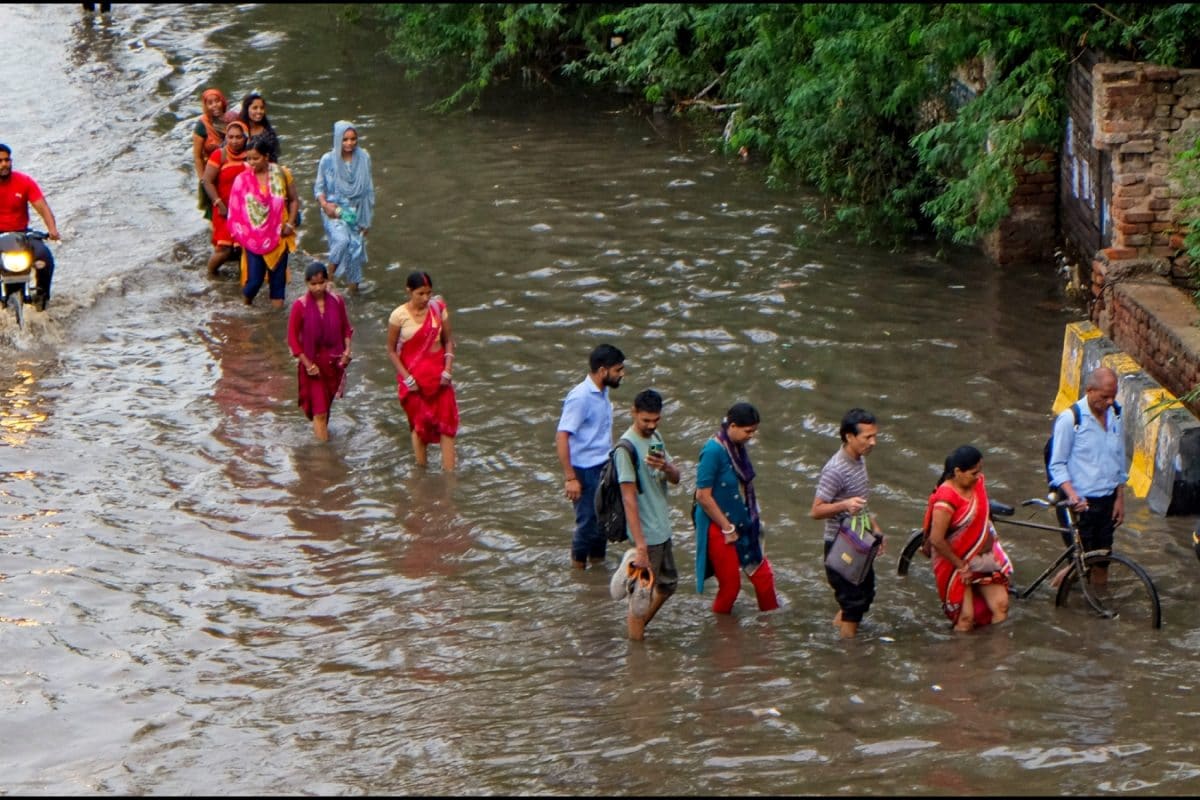

Gurugram witnessed significant disruption to daily life today as heavy rainfall led to widespread waterlogging on roads and streets. The downpour, which occurred during peak hours, caused major traffic congestion and left many areas submerged, impacting commuters and residents alike.
Several key areas of the city experienced severe waterlogging. National Highway 48, a crucial artery connecting Delhi and Gurugram, saw slow-moving traffic from Dhaula Kuan towards the airport. An underpass near the Indira Gandhi International (IGI) Airport, on the way to Dwarka, was also heavily waterlogged, adding to the traffic woes. Visuals from Golf Course Road showed significant inundation. Sectors 14, 15, 17, 21, 22, 23, 31, 40 and 45 were also among the worst hit localities. Hero Honda Chowk and IFFCO Chowk became bottlenecks.
The India Meteorological Department (IMD) had earlier predicted light to moderate rainfall, thunderstorms, lightning, and gusty winds for the region. A red alert was issued for Delhi, Noida, Ghaziabad, Faridabad, and parts of Haryana, Uttar Pradesh, and Rajasthan, warning of thunderstorms, hailstorms, and strong winds reaching 50–70 kmph. The IMD also highlighted the possibility of waterlogging in many areas, closure of underpasses, traffic congestion, and the potential for electrocution due to unsecured power lines.
In response to the situation, the Gurugram district administration has been working to manage the crisis. Deputy Commissioner Ajay Kumar has deployed 14 senior officers to oversee drainage management at 111 critical spots known for waterlogging. These officers are tasked with coordinating with the Gurugram Metropolitan Development Authority (GMDA), the municipal corporations of Gurugram and Manesar, the police, and the electricity department. They are responsible for ensuring functional pump sets, staff deployment at vulnerable sites, and the availability of fuel to expedite water drainage.
The administration aims to drain rainwater within 30 to 60 minutes of rainfall to minimize disruption. ADC Vatsal Vashishth has been appointed as the nodal officer to monitor the initiative, with all appointed officers required to provide updates on inspection visits, interventions, and infrastructure readiness.
While the heavy rain brought relief from the persistent heatwave that North India has been experiencing, it also exposed the city's vulnerability to waterlogging. The Gurugram administration has been trying to mitigate flood risks. The GMDA has been constructing a 750-metre-long open stormwater drain to channel excess rainwater directly into the Badshahpur drain.
Residents have, however, voiced concerns about the adequacy of the existing drainage infrastructure. Some residents criticized repeated drainage failures, while others alleged disregard for drainage connectivity in newly approved layouts. One GMDA official admitted that high-intensity rain overwhelmed the existing drainage, stating that while temporary solutions are in place, permanent upgrades are being planned.